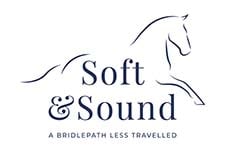I try not to give direct advice, but I might dare to make an actual suggestion based on what I have learned.
I know it is really, really hard to make sense of all the different approaches to training a horse out there, and it’s easy to develop a scatter gun approach to learning. Especially now, when you can access every trainer and training system under the sun with the click of a button. It’s all too possible to end up half- learning odds and sods of stuff, none of which really add up or make sense when blended together.
You’ll often hear, ‘Oh well, all roads lead to Rome!’ But the truth is, they don’t. Not where horsemanship and riding is concerned anyway.
Therefore, here is my suggestion, or for want of a better word – advice. Try to get as educated as you can about what good ridden movement and balance looks like. Acquaint yourself with as much understanding of anatomy and physiology as possible. Learn what you can about how horses really think and feel. Then create your own paradigm – your own blueprint of where you want to get to with your horse, and what you want that to feel and look like.
You use this paradigm as a backdrop to make sense of what trainers are saying and showing (note – not always the same thing).
Then spend time really studying the horses that are being produced by that trainer or training approach and observe what you like in light of your own paradigm. Your trainers horses should be their calling card – do you like what you see? Are there several examples of horses trained using these principles which align with your understanding of what good looks like?
Here are some elements of my paradigm that I weigh things up against;
?The poll should be the highest point
? The nose behind the vertical is never good news. Try to get your eye in as to where vertical actually is. A lot of horse people seem to have some funny variations of vertical.
? The horse is reaching towards the end of the reins with a raised base of the neck.
? The horse is never held in place with equipment or an ongoing imposed posture.
There are more…
When you find an approach to training which consistently produces horses that align with your personal paradigm, stick with it. You only have one life time, that is barely enough to understand one approach really well. You may want to draw on other ideas if they clearly fit with your paradigm, but don’t do too much dabbling or flitting.
Then, allow yourself to really settle into how long it’s going to take you to learn this stuff deeply. You’re in it for decades – not weeks. If you’ve done your research and feel as confident as you can that this approach has something to offer you and your horse, don’t panic and change tack as soon as it gets tricky. Just because you’re finding something hard this isn’t necessarily a cue to jump ship and go elsewhere. Quick fixes and magic bullets are rarely that.
I feel reassured that there are more than enough horse and human combinations in the Ecole de Legerete that align with my paradigm. This means that even when I am feeling lost or unsure, I can trust in the principles and process. You can be your horses best teacher if you take the time to arm yourself with knowledge and be prepared to commit to trying to understand one thing really well, as opposed to many things badly. to edit.

